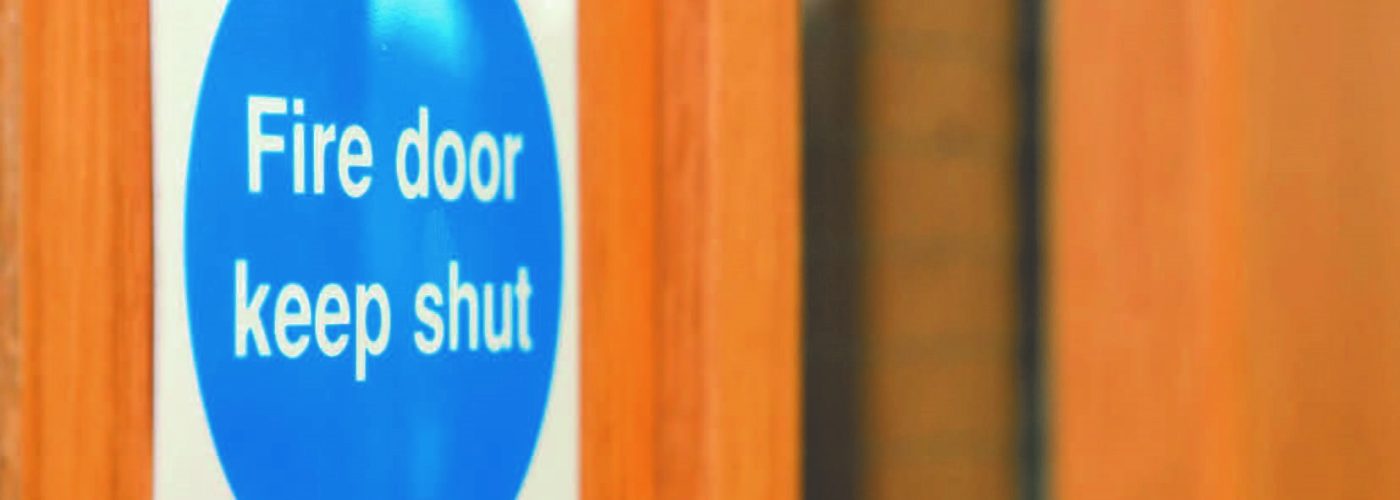Fire doors are a vital component of any fire safety strategy – but does current UK regulation go far enough? Ruth Deardon, Product Line Manager at JELD-WEN looks at what can be done to ensure fire doors perform as needed.
The critical importance of fire doors has been recognised throughout the recent scrutiny and revision of building regulations following the Grenfell tragedy, where a system found “not fit for purpose” by the Hackitt Review has been overhauled and strengthened to improve the fire safety of our buildings.
This has led to the creation of the Fire Safety Act 2021, the Building Safety Act 2022 and the Fire Safety (England) Regulations 2022, which seek to address many of the recommendations made in Dame Hackitt’s report. These sit alongside, and in some cases modify, existing legislation impacting fire doors such as the Building Regulations Approved Document B and the Fire Safety Order.
This new legislation sets requirements on how fire doors are maintained by a designated “Responsible Person”. All high-rise buildings, where applicable, will be managed by a Building Safety Manager, who oversees the fire door specification, door fitting and maintaining these in service.
Without doubt, this is a welcome move towards increased responsibility on fire safety, but does it go far enough? JELD-WEN believes that without formal training or qualification for installing fire doors, we are missing one vital component in managing this risk. Fire doors are a specialist construction item and due to reliance on past accepted practices we rely on a fitter’s competence and duty on how well they fit doors on site. Even a perfectly manufactured fire door will ultimately fail if it is not installed or maintained correctly.
This is a question not only of training, but also visibility across stages of a building’s life. Achieving a “Golden Thread” for construction projects, where all named stakeholders have access to a trail of readily available fire safety informationwill make a huge difference to how well fire doors are installed, maintained and, when necessary, replaced. Right now, this isn’t part of our building regulations. The definition of “Responsible Persons” still must be defined in context of the Fire Safety Act. Duties around fire door checks, any remedial work needed and other practices within the life span of a fire door again require attention.
What can be done?
Ultimately, fire doors are one of the most critical safety features of any building but will only perform as they should if properly specified, installed, inspected and maintained. Here at JELD-WEN we believe that there are a number of key areas of focus to address if we are to ensure every fire door can perform as intended.
Firstly, we think it is worth looking at areas where stricter legal requirements could be implemented. The most important criteria is making it mandatory to use only third-party certified fire doors which will ensure best-in-class practice and the door’s consistent performance. This should be coupled with ensuring all fire door installations and maintenance work is carried out by qualified and accredited fire door installers.
Making it a legal requirement to mark every fire door with its source manufacturer and performance will help to improve the traceability of doors within the UK housing stock. This task could be managed as part of a mandatory “Golden Thread” standard as it outlines how fire door information should be stored, updated and shared. This data should include manufacturer name and third-party certification, installation details, maintenance records, and blueprints all stored in an easily accessible digital format.
Finally, more government support is needed in tackling the fire door safety skills gap, including creating more apprenticeship opportunities and an education campaign designed to raise awareness of the opportunities available within the sector.
Looking to the future
Ultimately, while the UK’s overall fire strategy is certainly shifting in the right direction, there is still some way to go, particularly when it comes to fire doors. A fire door, after all, is much more than just a door. It is one of the most critical components of limiting the spread of fire in a multi-storey building.
As an industry, we must continue to work closely on each part of the fire door process to limit avoidable risk and help to keep people safe in their homes. After all, every fire door properly installed and maintained is another chance to save lives.
For more information on the JELD-WEN range of commercial fire doors visit: https://www.jeld-wen.co.uk/behind-every-doorset/





